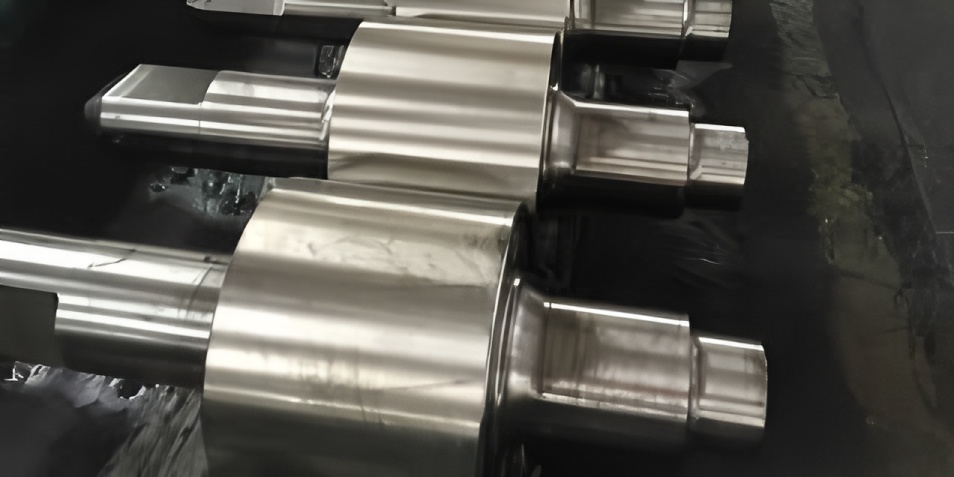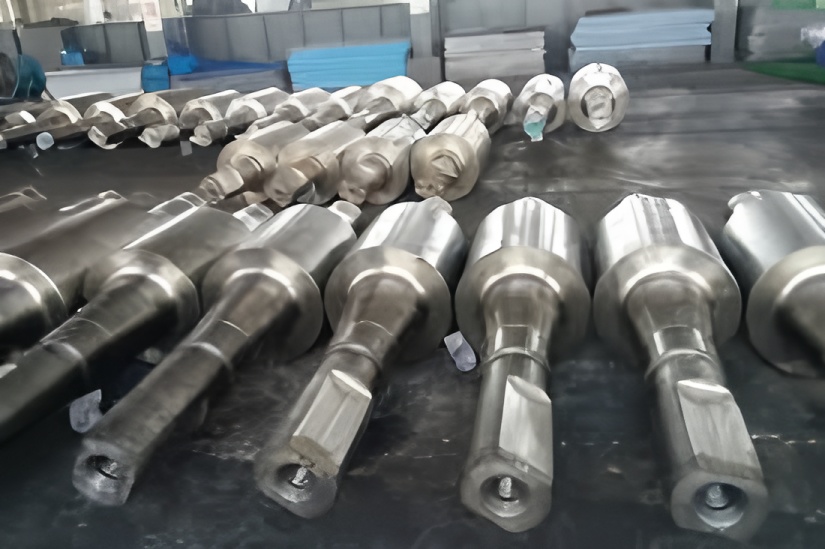This article examines the use of high-speed steel rolls in hot-rolled strip production and highlights their promising potential based on properties such as wear resistance, chemical composition, heat resistance, and surface characteristics. It also proposes practical solutions and recommendations for challenges encountered during the application of high-speed steel rolls in hot-rolled strip manufacturing.
Keyword: HSS rolls
HSS Rolls
In hot strip rolling mills, high-chromium cast iron has traditionally been used for work rolls in the front-end finishing stands. These rolls rely on the formation of a hard, wear-resistant chromium oxide layer through contact with the hot strip. However, this oxide formation is a dynamic process highly sensitive to cooling and rolling conditions, making it difficult to control. As a result, when high-speed steel rolls are employed, inconsistent oxide film adhesion can lead to spalling, adversely affecting both strip surface quality and roll service life.
Improvement of HSS Rolls
By modifying the chemical composition and enhancing the matrix structure, the wear resistance of high-speed steel rolls can be significantly improved. These rolls are increasingly used in hot strip finishing mills, where their application not only enhances product quality but also substantially reduces production costs. The metallurgical bond between the core and outer layer in HANI’s high-speed steel composite rolls is flawless, providing high tensile strength and excellent bonding layer integrity. This improves roll bending resistance and contributes to better strip shape control.
Superior Wear Resistance
Comparative studies show that high-speed steel rolls exhibit significantly better wear resistance than high-chromium cast iron rolls under the same conditions. Measurements from shutdown inspections reveal lower wear values, and rolls in good surface condition can often be reused after minimal regrinding, reducing both grinding workload and production costs. The tonnage rolled per millimeter for HSS rolls is approximately 26–28 times greater than that of high-chromium iron rolls. Additionally, HSS rolls demonstrate better thermal crack resistance. In the event of production incidents, minor grinding is often sufficient to restore the roll surface, simplifying processing and saving costs.
The friction coefficient of high-speed steel rolls ranges between 0.4 and 0.44, higher than that of high-chromium iron rolls. When used in the F1–F2 stands, this can improve bite conditions but also increases rolling force. This can be mitigated through process adaptations such as lubrication technology.

Optimization and Inspection of HSS Rolls
Given the high cost of high-speed steel, careful attention must be paid to grinding, operation, removal, and post-incident inspection.
Grinding Optimization
The high hardness, wear resistance, and friction coefficient of HSS rolls pose challenges in grinding and quality control, including reduced grinding efficiency, vibration marks, difficulty in profile control, and surface roughness issues. Manufacturers can address these by selecting appropriate grinding wheel materials and optimizing parameters such as wheel hardness, grit size, feed rate, and polishing cycles. Advanced techniques like periodic variable speed control help achieve the required surface quality.
Lubrication Technology
Oil lubrication in finishing mills aims to reduce rolling force, energy consumption, roll wear, and improve strip surface quality. Emulsified oil-water mixtures are sprayed onto the roll surface to form a protective film that lowers the friction coefficient between the roll and strip. This reduces rolling force, mill vibration, and roll wear. When combined with gap spraying to prevent oxide film spalling, this approach also lowers roll surface temperature and thermal stress, reducing crack formation. Applied alongside HSS rolls, lubrication technology counteracts their higher friction coefficient, improving product quality and reducing consumption and energy use.
Inspection of HSS Rolls
To ensure operational safety, HSS rolls must undergo stringent inspection. Incidents generally arise from pile-ups or mechanical impact. Although HSS rolls exhibit good thermal crack resistance, pile-ups can sometimes expose subsurface defects. Post-accident, eddy current testing should be used to detect surface cracks, followed by ultrasonic testing to check for internal defects. Surface wave testing or dye penetrant inspection can also be employed. Any detected cracks must be completely removed through grinding, and the depth assessed to determine safe regrinding allowances.
Despite good thermal crack resistance, HSS rolls are highly sensitive to mechanical cracks. Any mechanical damage must be thoroughly ground out to avoid spalling, fragment loss, or roll breakage during operation. Post-collision, eddy current or surface wave testing is essential to confirm the absence of cracks.
PC FC Shape Control Optimization
Due to differences in physicochemical properties—such as thermal expansion coefficient, friction coefficient, elastic modulus, and hardness—between HSS rolls and high-chromium or ICDP rolls, roll profile must be adjusted. After rolling, water cooling is halted, and the roll temperature is measured at multiple points 20 minutes later. Temperature distribution data is used to optimize thermal models, and wear curves are measured after the roll cools to room temperature. This data is fed back to the PC FC system to refine wear models.
The ongoing integration of new technologies to enhance product quality, precision, and cost-effectiveness remains a key direction in rolling technology. High-speed steel rolls offer superior wear and thermal cracking resistance, improving product quality and reducing costs. However, challenges such as increased rolling force, sensitivity to mechanical cracks, and grinding difficulties must be addressed. Continued总结经验 in the application of HSS rolls will further increase utilization rates, improve strip surface quality, and reduce production costs.


